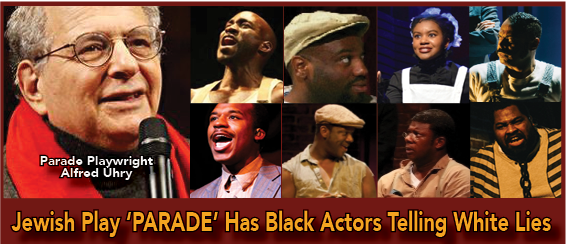Jewish Play PARADE Has Black Actors Telling White Lies
Jewish Racism Ignored in Leo Frank Musical ‘Parade’
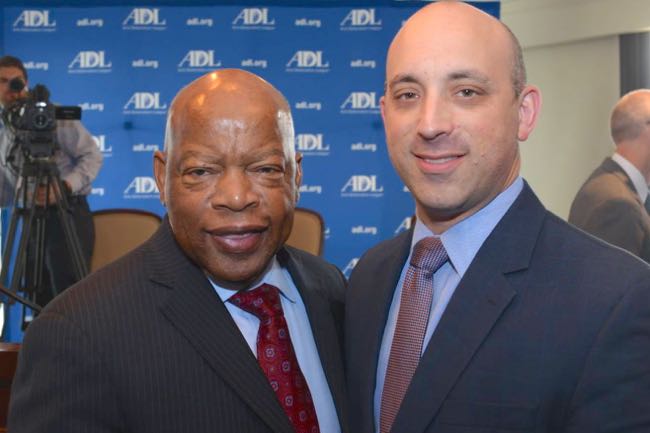
On August 17th of 2015, civil rights pioneer John Lewis addressed the 100th anniversary commemoration of the 1915 lynching of Jewish leader Leo Frank. Lewis and all the leaders at the event emphasized Frank’s significance to the American civil rights struggle. A theatrical production currently touring America titled Parade reinforces that notion, but John Lewis—as well as the Parade actors and theatergoers—may be unaware of the profoundly racist ways in which Leo Frank and his Jewish supporters attempted to destroy Black civil rights in America.
The legacy of the 1913 Leo Frank case is still potent in the minds of American Jews. At least a dozen books and hundreds of articles have been written on the horrific Atlanta murder of a 13-year-old Gentile girl named Mary Phagan and the lynching of her convicted murderer, Leo Frank. And though the case is largely unknown outside of Jewish circles, it is widely considered to be the greatest example of anti-Semitism in American history. From this one Atlanta tragedy have come, according to Jewish scholars, many significant events in Black history. It is claimed that the terrorist Ku Klux Klan was reignited as a result of the Leo Frank Affair and that the case influenced Jews to partner with Blacks in the early civil rights movement. Frank’s position in Atlanta as the president of B’nai B’rith has bestowed upon him the title “Father of the Anti-Defamation League,” a B’nai B’rith offshoot that began in earnest in 1913 as a result of the case. Indeed, Leo Frank has become Jewish America’s most important civil rights icon.
In 1913, Leo Frank was arguably the most important Jew in the American South. He was a businessman and managed the pencil factory where the young murder victim was employed. Atlanta police investigated the crime and within days Frank was charged with her murder. The trial in the summer of 1913 gripped the state of Georgia, and its extensive coverage by the three Atlanta daily newspapers even pushed World War One off the front pages. At the end of the longest and most expensive trial in Georgia’s history, Frank was convicted and sentenced to hang. It was a trial, Jews say, that was marred by anti-Semitic mob violence and terror.
Two years of unsuccessful legal appeals followed, when the Georgia governor stepped in to commute Frank’s sentence to life imprisonment. Within weeks, however, an unknown group of armed vigilantes kidnapped Frank from his prison cell, drove him to the girl’s hometown and lynched him from an oak tree. For Jews, that act—the only lynching of a Jew in American history—resonates deeply even today.

A Tony Award-winning musical titled Parade is now touring the country, serving to preserve the case in the hearts and minds of American Jews. Alfred Uhry is the show’s writer, but he is better known as the writer of the controversial racial drama Driving Miss Daisy. He says that his mission with Parade is not to entertain but to infuriate:
“If those people get riled up, it’s their problem, not mine. History says we’re 99.999 percent sure that Frank didn’t do it, and I’m not going to convince the rest.”
But there is a real problem lurking within Alfred Uhry’s script that Parade’s Black actors must confront, a problem that moves to center stage the racism inherent in the play itself and those who have perpetuated its racially charged message. According to those who so passionately champion Leo Frank’s cause, the “real murderer” was a Black man named James “Jim” Conley, a janitor at Frank’s factory. They say that, by either wily deception or coalition with “anti-Semitic” authorities, Conley’s gruesome crime was pinned on an innocent Jew.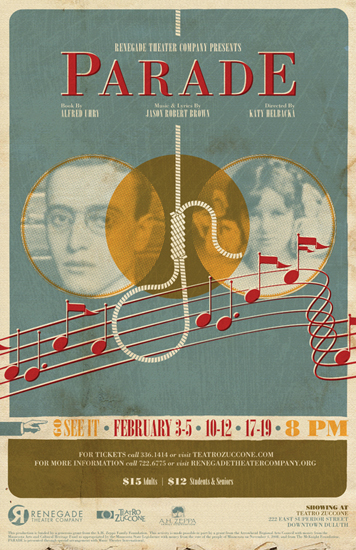
But are Parade’s Black actors as “99.999 percent sure” of Conley’s guilt as Alfred Uhry claims to be? And are those Black actors, who have earned rave reviews for playing Conley as “slippery,” “devious,” and “menacing,” willing to examine the actual evidence in the case, even if it shows Uhry’s narrative to be dead wrong? Let us look at some of the particulars of the case and see if Uhry’s artistic vision has created more racial friction than harmony.
What REALLY Happened on April 26, 1913?
On April 26, 1913, the National Pencil Company factory was closed for business, but 13-year-old machine operator Mary Phagan came to collect her pay from Frank, who later admitted he was the last person to see her alive. Investigators believed that Frank set up this encounter in the deserted building hoping to proposition the girl for sexual favors, but when she refused his advances he became violent and in the ensuing struggle his attempted rape escalated into murder. Mary’s body was found the next day and after police eliminated several other suspects (three of them Black), Frank was charged with the crime.
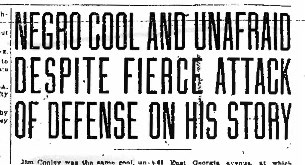
Several weeks after Frank’s arrest the janitor James Conley stood up to confess that he was also in the factory on the day of the murder, but he was there only at the request of Leo Frank, who had asked him to be a lookout at the front door as Frank rendezvoused with the unsuspecting employee Mary Phagan on the floor above. Conley said that he had performed this sentry role several times before, and so he did as he was told. He watched as Mary came in and went up the stairs to Frank’s office, but soon a panicked Leo Frank called him upstairs and admitted that he had accidentally killed the girl and needed Conley’s help moving the body to the basement. Conley’s very detailed confession—corroborated by the physical evidence—was so convincing that it became central to the prosecution’s case. For his part, Frank claimed not to have any knowledge of Conley or the murder, and his defenders then began their 100-year campaign to make Conley the lone murderer of Mary Phagan.
Black & White Actors Must Flip the Uhry Script
 Unfortunately for Alfred Uhry and those who promote Frank’s innocence, the case is far, far from a simple “he said, she said.” It is multi-layered, with deep racial implications then and today. Before the next Black (or white) actors pick up Uhry’s deeply flawed Parade script, they must pick up and read The Secret Relationship Between Blacks and Jews, Volume Three: The Leo Frank Case, The Lynching of a Guilty Man. Its 536 pages contain over a thousand footnotes, with multiple illustrations, maps, diagrams, photos, and graphics that touch on every aspect of this controversial case. Here are a few of The Secret Relationship’s documented findings (and the page numbers where full references can be found) that not only challenge many of the longstanding but false claims about the Leo Frank trial and lynching but also conflict irreconcilably with Alfred Uhry’s Parade:
Unfortunately for Alfred Uhry and those who promote Frank’s innocence, the case is far, far from a simple “he said, she said.” It is multi-layered, with deep racial implications then and today. Before the next Black (or white) actors pick up Uhry’s deeply flawed Parade script, they must pick up and read The Secret Relationship Between Blacks and Jews, Volume Three: The Leo Frank Case, The Lynching of a Guilty Man. Its 536 pages contain over a thousand footnotes, with multiple illustrations, maps, diagrams, photos, and graphics that touch on every aspect of this controversial case. Here are a few of The Secret Relationship’s documented findings (and the page numbers where full references can be found) that not only challenge many of the longstanding but false claims about the Leo Frank trial and lynching but also conflict irreconcilably with Alfred Uhry’s Parade:
• A 23-member grand jury that included five prominent members of the Jewish community voted for the indictment of Leo Frank. (See pages 52, notes 102-106; 88 n. 181; 146-147; 160; 212; 338.)
• Harvard law professor Alan Dershowitz, presumably a careful legal analyst, claimed that the trial crowds “shouted anti-Jewish epithets and demanded Frank’s death.” Abraham Foxman and Jonathan Greenblatt of the Anti-Defamation League maintain that a mob chanted, “Hang the Jew, Hang the Jew.” But the ADL’s own expert, Steve Oney, told the Jewish Journal: “[I]t didn’t happen.” (See pages 163-164, 165, 173-187.)
• Frank himself told a Jewish newspaper publisher, “Anti-Semitism is absolutely not the reason for this libel [murder conviction] that has been framed against me. It isn’t the source nor the result of this sad story.” (Page 142.)
• Anti-Semitism was virtually absent from the case, but anti-Black racism was brutally present: Leo Frank, as leader of B’nai B’rith, publicly and openly referred to Blacks as “niggers.” His defense attorneys used the word “nigger” and other racist slurs dozens of times in court. His main attorney told the jury: “If you put a nigger in a hopper, he’ll drip lies.” (Pages 121-123, 128-129, 131-133, 363.)
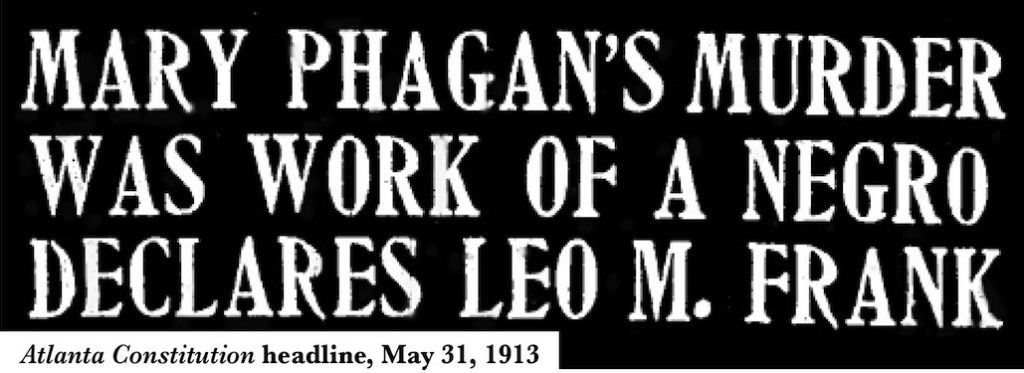
• Frank argued in court that the many Black witnesses that testified should not be believed—simply because they were Black—and that “negro testimony” was by definition inferior and unreliable. Further, Frank argued to the all-white jury of his peers that murder, rape, and robbery were “negro crimes” and thus, he, a white man, could not have committed the murder of Mary Phagan. (Pages 124-136.)
• Frank himself hired two of the most prominent (and expensive) private detective agencies in America and both concluded that Leo Frank was the murderer of Mary Phagan. (Pages 47-48; 65-66; 91 note 187; 147; 247.)
• Before Frank accused James Conley of the crime, Frank accused the Black night watchman who found the body. Frank’s hired private eyes actively targeted Newt Lee and actually planted a blood-soaked shirt in the innocent Black man’s home, and then told the police where they could find that damning “evidence.” At the same time, Frank altered Lee’s workplace time card in order to make Lee the prime suspect. (Pages 35-44.)
By now Parade’s Black actors should be able to see why Mr. Uhry left ALL those facts on the cutting room floor. But there’s more:
• Leo Frank’s own Black maid, Minola McKnight, swore that she overheard Frank’s wife and mother discussing how Frank had confessed that he had killed a girl.(Pages 378-79, 423-428.)
• Powerful Jewish leaders rallied to Frank’s defense, but privately they admitted that they could not stand Frank’s personality and that he probably was guilty. Albert Lasker financed Frank’s legal defense. His private view of the B’nai B’rith president was harsh and disturbing: “he impressed us as a sexual pervert. Now, he may not have been, or rather a homeosexual [sic] or something like that.” Lasker said, “I hope he [Leo Frank] gets out…and when he gets out I hope he slips on a banana peel and breaks his neck.” (Pages 216-217, 254-255, 322.)
• One reviewer of Parade writes of the “young, lying female employees claiming that Frank has sexually abused them,” but Frank’s main attorney admitted in open court that Frank’s lewd behavior was “a sign that we are getting more broad-minded…[D]eliver me from one of these prudish fellows that never looks at a girl and never puts his hands on her…” Twenty adolescent girls and young women gave such powerful testimony about Leo Frank’s sexual harassment at the factory that none of his bevy of highly paid attorneys dared to cross-examine them—not one. (Pages 107-123.)
• Frank supporters tried to hire a Black woman named Annie Maude Carter to slip Conley some poison while he was in jail waiting to testify at Frank’s new-trial hearing. She identified the plotters in open court as prominent members of the Jewish community. (Pages 262-263.)
• Leo Frank refused to take an oath on the Bible, and then refused to be cross-examined by prosecutors. But James Conley withstood 16 hours of cross-examination—under oath. (Pages 92ff, 122, 136-140, 362-382.)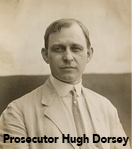
• Uhry’s Parade slanders Prosecutor Hugh Dorsey, but it was Dorsey who allowed Blacks to testify in an American courtroom, a truly unprecedented advancement in civil rights. Leo Frank’s attorneys fought this tooth and nail and did everything they could to keep Blacks from participating in any part of the trial. Uhry’s script does not complain about the all-white jury because it was Frank’s attorneys—not Georgia prosecutors—who used their power to eliminate Blacks from the jury pool. Dorsey later became governor of Georgia, whereupon he forcefully condemned the racial violence in his state and in America. The NAACP declared that Governor Dorsey’s stand “greatly enhanced the significance of the anti-lynching crusade.” Frank’s B’nai B’rith and all Jewish organizations were totally absent from the anti-lynching movement. In fact, Leo Frank’s main appeals attorney, Louis Marshall, the founder and president of the American Jewish Committee, fought to undermine anti-lynching legislation, calling it “unconstitutional” and a violation of “state’s rights.” (Pages 88, 478-479.)
• Several of Frank’s strongest advocates—including his main lawyer and the man who financed his legal appeals—were both Jewish and open and active members of the American eugenics movement. A generation later Hitler would draw inspiration for his anti-Jewish policies from American eugenicists. (Pages 217, 221-222.)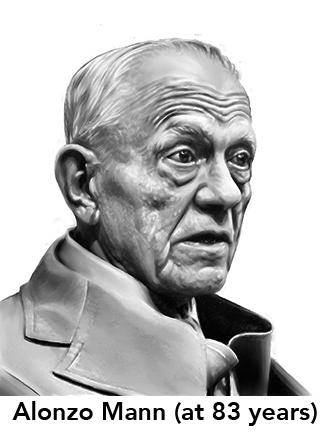
• Mysteriously, in 1982 a “witness” named Alonzo Mann materialized, claiming that he was at the factory in 1913 on the day of the murder and saw Conley carrying the body of Mary Phagan, but Mann had given many conflicting stories—then and now—that are irreconcilable with the known facts. (Pages 435-464.)
• Many Jewish scholars have insisted that the terrorist Ku Klux Klan was rebirthed by the “anti-Semitism” stirred up from the Leo Frank case. But the fact is, the two events—Leo Frank’s lynching and the rebirth of the KKK—had NOTHING to do with each other. The epic movie The Birth of a Nation, released in February 1915, was the impetus for the Klan revival—not the Leo Frank case. In fact, even though it was the most racist movie ever made and the KKK used it as a recruitment film, Jews financed its production, played it at the theaters they owned, promoted it, and reviewed it positively in the newspapers they published. The Jewish movie mogul Louis B. Mayer made so much money distributing the movie that he used the profits to start Metro-Goldwyn-Mayer (MGM), one of the greatest purveyors of racist Hollywood propaganda of all time. (Pages 309-320.)
Leo Frank may be the “Father of the ADL,” but the B’nai B’rith president was a leader in the effort to keep Blacks in an inferior, marginalized position at the bottom of American society. Evidence shows him to be guilty of murdering Mary Phagan and guilty of attempting to pin his crime on two innocent Black men. James Conley and the many other Blacks who factored in the Leo Frank case have been horribly slandered, and the killer of Mary Phagan—Leo Max Frank—has been allowed to escape responsibility.
Parade’s Black actors are no longer forced into these racist roles, as were our actors of yesteryear. They may believe they are helping Jews to tell a historical reality, but in fact they are helping Jews to spread white supremacist propaganda. Today, Black actors are responsible not just for delivering their lines, but for delivering the truth.
What will Parade‘s Black actors do now?

